

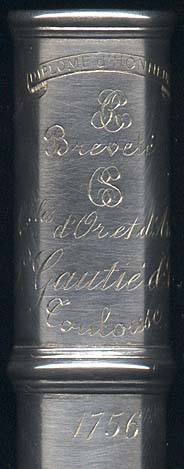 |
Claude Rive / P. Gautié
& Cie
|
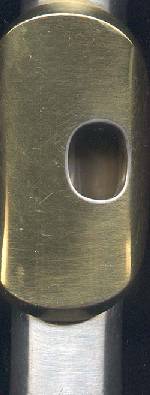 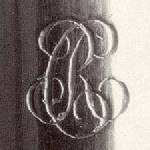 |
 |
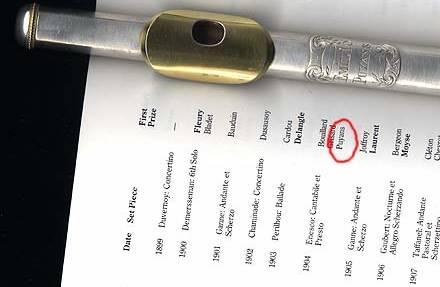 |
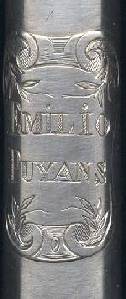 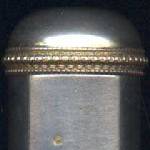 |
The ornate engraving on
the headjoint indicates ownership by a famous flutist of
the time, Emilio Buenaventura Puyans who, born in
Santiago, Cuba in 1883, moved to Paris with his family at
eight years of age. He studied flute at the Conservatoire
de Paris under Paul Taffanel and Émile Pessard, winning a
First Prize in 1904 (see page from Claude Dorgeuille's The
French Flute School above). Puyans went on to have a
successful solo and orchestral career in the early part of
the century with the (among others) New York and San
Francisco Symphonies as well as serving as Cuban consul in
San Francisco, Vienna, Marseille and Portugal. He retired
to France and died in Paris in 1956.
The top right image shows the very open shape of the embouchure. What appears to be overcutting is cosmetic wear to gold plate. Below it is a closeup of the "CR" monogram. The image to the left shows the crown and one of several tiny "crab" hallmarks on the body and mechanism, which simply indicate the flute is at least .800 fine and was made in France after 1838. The highly magnified color image to the right is a bit confusing due to the gold plate left behind combined with reflections from the red case interior and chromatic aberration from my homemade closeup lens. The black and white photo below may be easier to reference to see the crab body facing upward and slightly to the left (or downward and slightly to the right?), with the claws in front, smaller walking legs to the sides and swimming legs behind. OK, you really do need to use your imagination, and try to ignore the punch outline surrounding the crab. I tried to outline the anatomy as best I could manage, but I am neither an artist nor a connoisseur of insect shaped crustaceans. (During this period the Paris Assay Office used the "boar's head" hallmark while silversmiths from outside Paris used the crab.) |
 |
 |
This instrument was
found in its altered state by the previous owner in a shop
in New York called Rod Baltimore International Woodwind
and Brass. He had the instrument overhauled, with
handmade pads, and played it professionally in the NYC
area for the next four years. During this time the
mechanism has remained remarkably light and tight,
requiring only two minor adjustments even though for much
of this time it was being played 30 hours a week.
The flute appears to have originally been completely gold-plated. At some time, probably during retuning, the plating was removed from most of the exterior and keywork, remaining on the lip plate, riser, tubing interior, head tenon exterior, tone hole facings, crown decoration and within the engravings. In all likelihood the "brushed" finish was chosen over a more traditional highly polished tube at this point It is attractive, it feels less "slippery" and, best of all, it doesn't show fingerprints! |
| In the image above you
can just see the outline of the original tone hole opening
to the left of the trill pad cup. Also visible is a
slight discoloration of the tubing seam just to the left
of the strap.
At right you see the elegant gesture of the Bb trill touch and the fluid shape of the G# touch. Above the upper G# steel post is a bit of larger diameter tubing applied to the mechanism between the L3 G# and G pad cups. I assume this to have been done in an overhaul subsequent to the retuning to reinforce the point where material had been removed to shorten the spacing between the pad cups. |
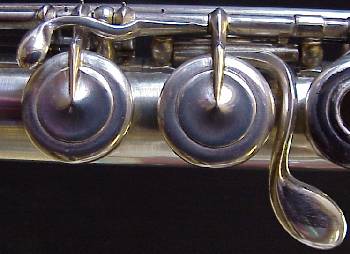 |
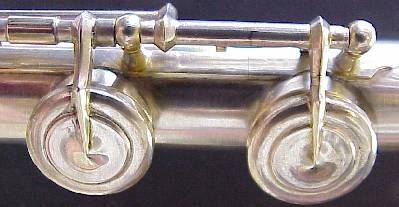 |
On this shot of the foot we see the more obvious signs of retuning and later work done to reinforce or tighten the mechanism. To the right of the C you can see evidence of the original tone hole location. The key arm has been cut to reposition the pad cup. Above the left edge of the C pad cup the strap was cut to shorten the distance between the posts, and the tubing was cut to match. Larger tubing has been applied to either side of the C# key arm -- the bit to the left probably to reinforce an alteration seam, the bit to the right probably to tighten the mechanism? |
| GoferJoe's Flutes GoferJoe's Personal Page GoferJoe's Arts Burrow Images &
Provenance by J.
W. Sallenger and Brian Miller |
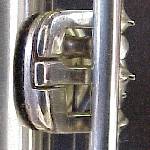 (Thanks
Brian,
Gerardo and Peter for your assistance!)
|